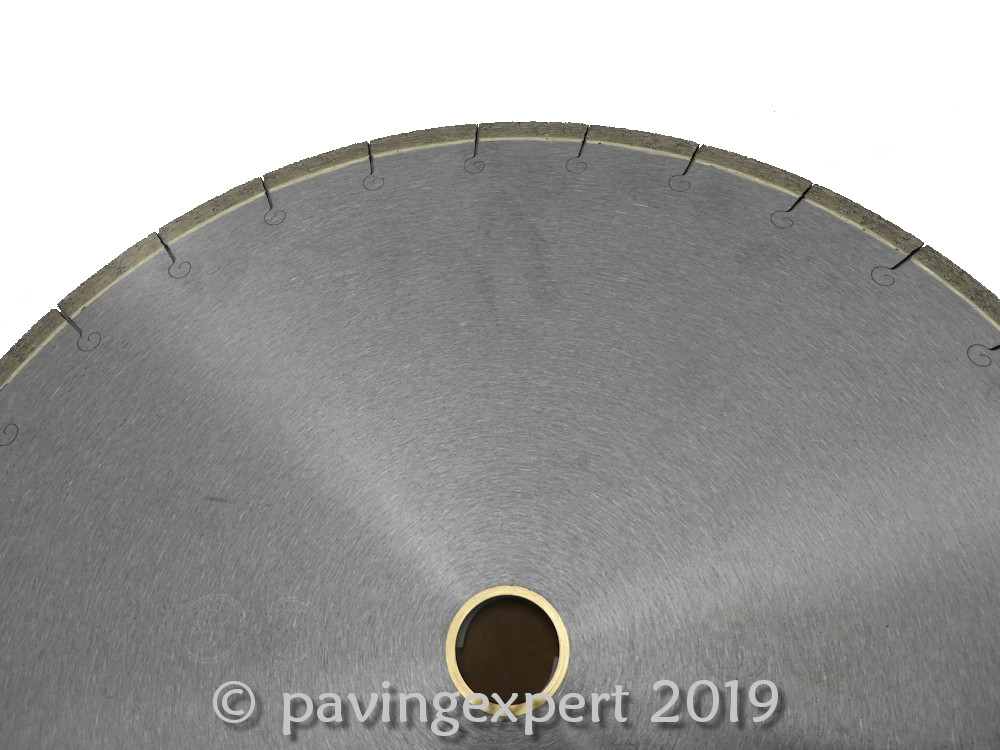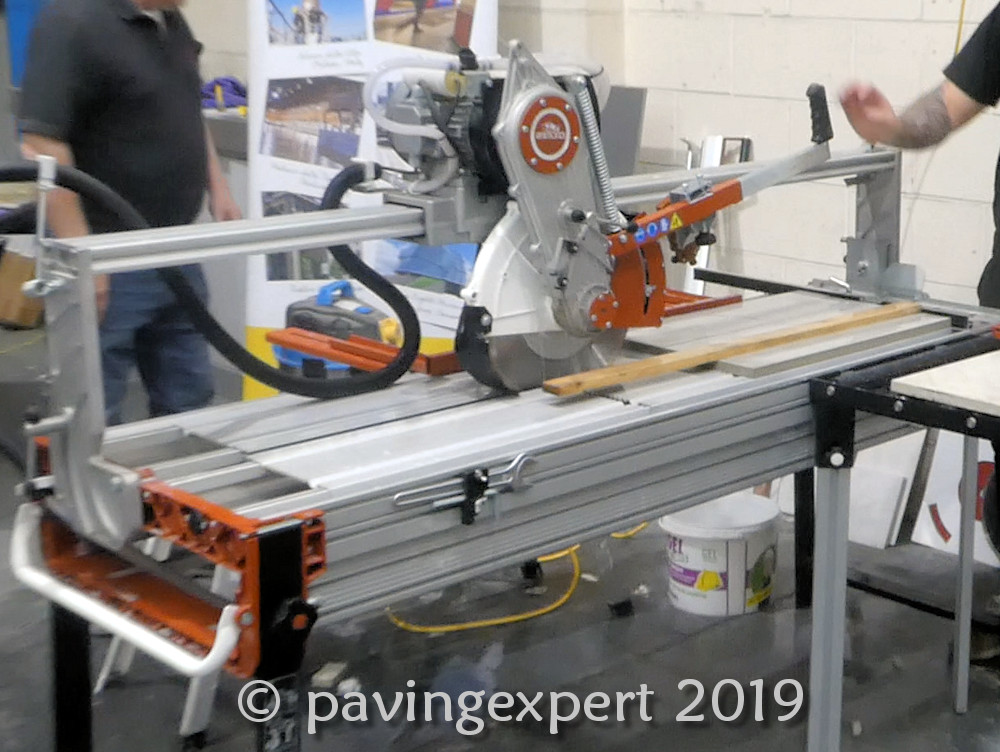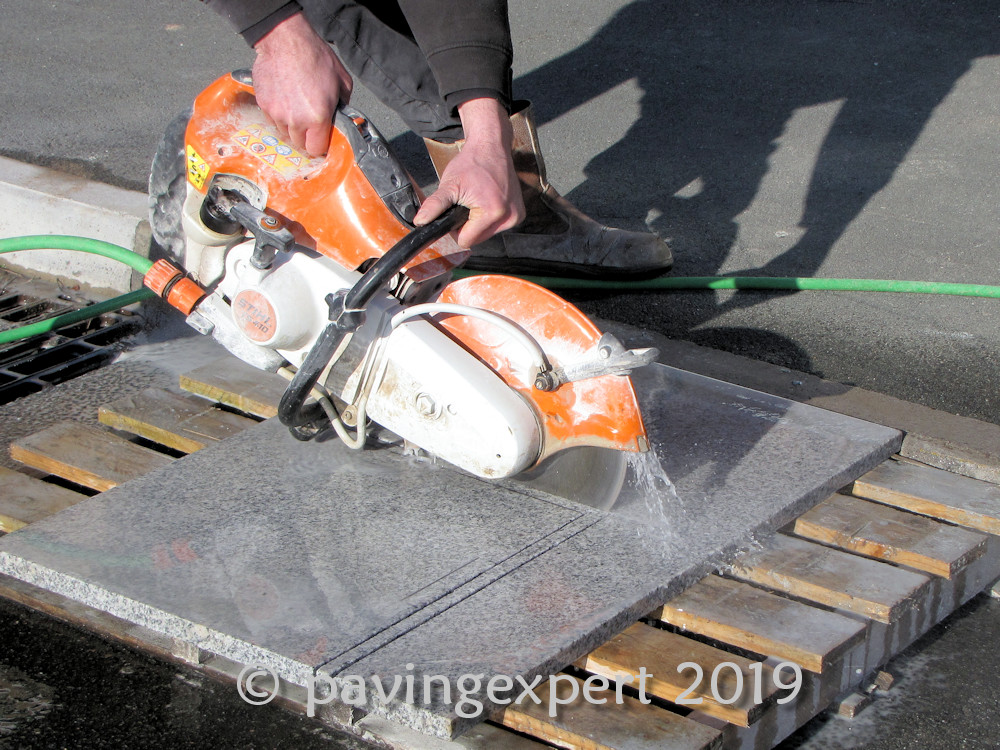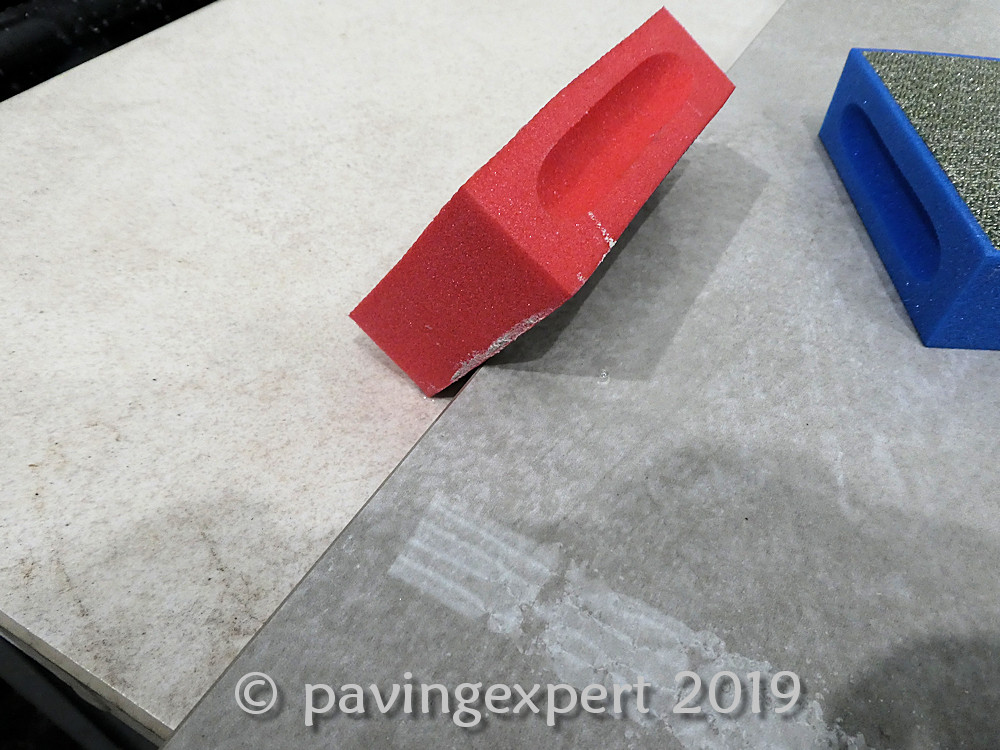Introduction:
As mentioned elsewhere, the only effective way to cut porcelain, ceramic or vitrified paving is by using a diamond blade. It is not possible to accurately cut these types of paving with hand tools nor with basic abrasive blades, even if they are marked as suitable for cutting stone or hard materials.
For quality installations, cutting is critical. Good quality porcelain does not like being cut with cheap, nasty, inappropriate blades. Only a specialist, continuous-rim porcelain-cutting blade will do.
Blades:
Abrasive or cheaper diamond blades will very often chip, spall and/or shatter the tile/flag as it is being cut, resulting in unsightly, unprofessional cuts edges, or excessive wastage as damaged and broken tiles/flags have to be thrown away.
Continuous rim blades are very noticeably not divided into segments although they may have small, narrow cooling slits that sub-divide the blade. This arrangement ensures the ‘shock’ caused by the blade as it chews its way through the substrate is minimised and there is none of the hammer effect that can effect when heavily segmented blades are used, with each individual segment imposing a repeated percussive strike as the blade spins around at high speed.

The cutting edge of the best blades will have a relatively soft matrix embedded with the cutting diamonds. This ensures that the diamonds are presented to the material being cut without being hindered by an overly hard matrix, and a more effective, clean cut is achieved.
Read more about Diamond Blades.
The Right Tools: Bench Saws
For the very best quality work, a bench saw should be used, as these ensure the tile/flag is held safely and securely in position during the cut, that the blade is properly cooled and washed with water while cutting, and the accuracy of cut is as near perfect as possible.

Hand-held cut-off saws have a gyroscopic effect due to the high-speed spinning of that large blade, and while this tends to ‘steady’ the saw when in use, it can make it extremely difficult to keep the cut perfectly straight, as even the slightest twitch or tic or tremor is exaggerated by that same gyroscopic effect. The result is a cut line that, even with the best will in the world and years’ of experience, can look a little ragged.
Any installer serious about porcelain and wanting to provide their clients with a superior standard of work will be using a bench saw. They are, without doubt, and essential tool for any professional contractor, just as is a roller for macadam gangs. Would you trust a gang laying blacktop if they had no roller?

Finishing with Quality:
As ever, the key advice is to measure twice and cut once. Take your time, keep the blade true and straight, and use water to both suppress the dust and keep the blade cool.
On completion of the cut, the sawn edge and the arris should be ‘sanded’ down, using specialist diamond polishing pads of various grades, starting with a coarser grade and finishing with the finest. This will remove any burrs or unevenness from the cut line and present a professional edge, slightly bevelled and tidily finished, that will maintain the high level of professionalism expected of quality installations.

Also, after every few cuts, no more than, say five, the blade itself should be ‘cleaned’ using a suitable dressing stone of aluminium oxide to remove any scum or residue that has accumulated on the cutting edge from the substrate that has been cut.
Video:
